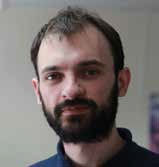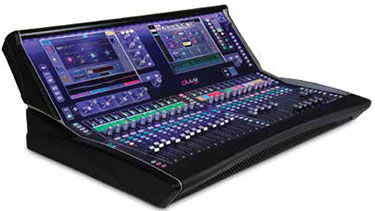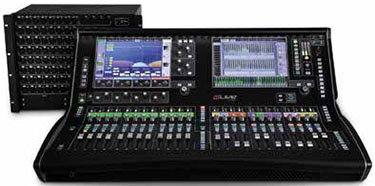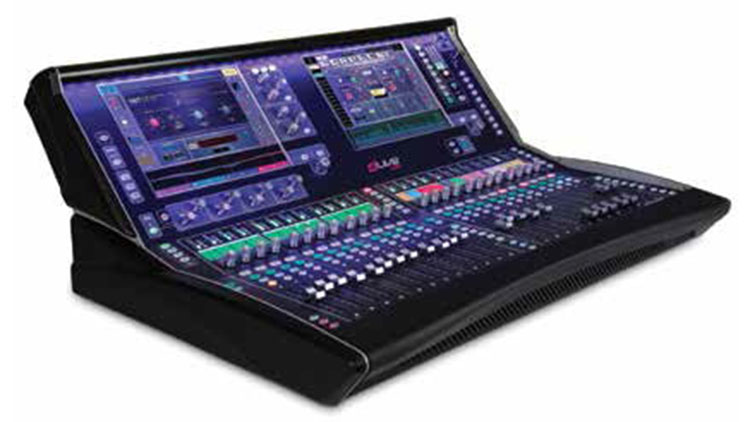Quick Bio

Name: Nicola Beretta
Title: Head of Product Marketing
Company: Allen & Heath
Market Report: Since C Class is aimed at a different market, it’s available in a 12-fader, 19-inch rack-mountable control surface, the C1500.
Allen & Heath unveiled its dLive C Class range of compact Surfaces and MixRacks at the beginning of 2017, making the platform more widely available to AV, installation, and live event applications. Faced with designing to a price point, the company looked to its earlier experiences with iLive, according to Nicola Beretta, Allen & Heath’s U.K.-based head of product marketing.
“We didn’t want to take away from channel count, or sonic performance, or sound quality—we still wanted 128 input channels, full processing, 16 effects, and 64 buses, and all the DEEP embedded modeling plugins,” he said. “It was a massive challenge, because how can we take cost out of that?”
The dLive C Class is built on XCVI (96, in Roman numerals), the 96kHz FPGA core behind A&H’s flagship console platform, the S Class. “A single FPGA effectively runs 36 parallel virtual cores. This gives us a lot of power and flexibility to develop new algorithms for processing, and for lower latency; we got the overall system latency down to 0.7 milliseconds, input to output,” Beretta said.
That processing power allows users to stack as many DEEP embedded plugins—emulating a variety of EQ, dynamics, and effects—as they wish on every channel, he continued. “They’re available to users without the complications of an external plug-in system with licenses, routing in and out, or added latency.”

A&H’s C Class range is essentially a smaller and lighter version of the company’s touring-grade S Class flagship.
So how did A&H reduce costs? “The brief was, let’s keep the same sonic performance and processing capability, but scale down slightly on the mechanical construction, the physical size, the number of physical controls that you have on the control surface,” he said.
The dLive S Class is a touring-grade flagship, Beretta continued, with extra-thick metalwork, redundant power supplies, and deluxe surfaces and expanders. C Class surfaces are smaller and lighter. “It doesn’t mean that it does less than S Class, but you have fewer physical knobs for hands-on operation.”
Since C Class is aimed at a different market, it is even available in a 12-fader, 19-inch rack-mountable control surface, the C1500. “It’s still capable of mixing the full channel count,” he stressed. “Because the MixRack, your stage box, is actually the mixer. It doesn’t matter how big the control surface is, it’s just a remote controller for your MixRack.”
That paradigm also means you can mix without a surface. “You can control it with an iPad, a laptop, or a Mac/Windows PC running Director software, which is a free download from our website. You can control it from a third-party TCP/IP in an installation. So you could have the mixing brain in a control room, or wherever, and control it with Crestron or AMX panels.”
Surface options also include the C3500, offering 24 faders and twin 12-inch touchscreens, and the 20-fader, single-screen C2500. MixRack options include the CDM64, supporting 64 mic/line inputs and 32 line outputs, the CDM48 (48 mic/lines in, 24 lines out), and the CDM32 (32 mic/line inputs, 16 line outs).

The C Class’s MixRack stage box options include the CDM64, supporting 64 mic/line inputs and 32 line outputs.
The dLive C Class may optionally be fitted with two networking cards—one in the surface, one in the MixRack—supporting five different protocols or interfaces, including Waves’ SoundGrid off-board plugin server. Dante, MADI, and fibreACE optical cards are also available, and A&H will be launching a new Super MADI card, said Beretta. All are capable of up to 128 bi-directional channels at 96kHz.
“You can use it for multitrack recording; you can record 128 tracks at 96k on a laptop. We were quite surprised when we tested it on standard MacBook Pros and found that it works reliably. That’s more [channel capacity] than Cat-5 networking technology, and a great recording solution.”
The surface can be freely configured: “You can create your own layout of where you want your input channels, VCAs, and masters, and save it as a scene or as a show file,” said Beretta. Not only that, but areas of the touchscreen are also configurable. “You can have your EQ full-range view on the bottom part of the screen, or you can decide that you want a meter bridge that you can scroll through and see all of your 128 input channel meters. And on the right part of the screen there could be a ‘widget’ to control your compressor and gate, or sends to particular effects units, or specific monitor sends. It gives you extra flexibility in building an interface that works for you, instead of learning an interface that you’re forced to use.”
In short, said Beretta, A&H’s dLive C Class platform punches well above its weight. “There are not many systems out there that can give you the number of channels and the sound performance of the dLive system at that price point.”
Steve Harvey (sharvey.prosound@gmail.com) is editor-at-large for Pro Sound News and also contributes to TV Technology, MIX, and other NewBay titles.
